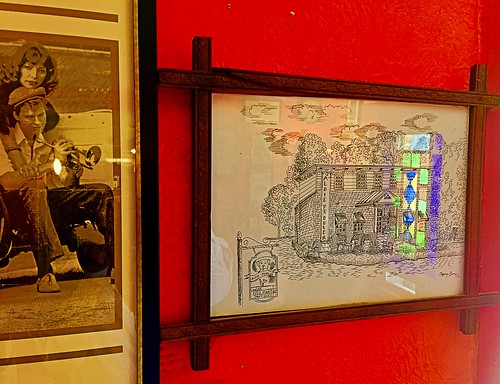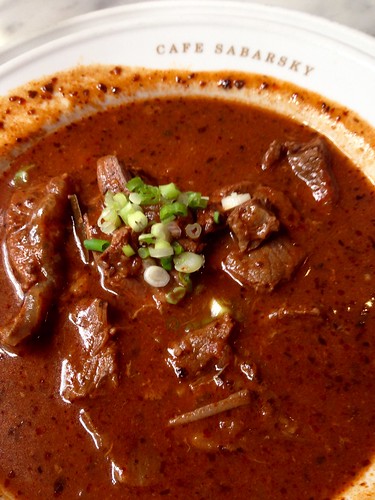Reatment responseSVR(+) n ( )SVR(-) n ( ) n = 13 7 (54) 10 (77) n=9 5 (56) 7 (78) n=4 2 (50) 3 (75)P valueSENSPEPPVNPVACCAll patientsRVR (+) EVR (+)n = 33 28 (85) 33 (100) n = 33 28 (85) 33 (100) n=0 -0.05 0.8546805574Previous RelapsersRVR (+) EVR (+)0.08 0.8544854475Previous Non-respondersRVR (+) EVR (+)–50-100-Note: SVR: sustained virological response; RVR: rapid virological response; EVR, early virological response doi:10.1371/journal.pone.0058882.tour study had an SVR. However, the sample size was too small for the results to be conclusive. Recently developed DAAs have become the standard of care for HCV-1 infection.[4] This innovation, in conjunction with peginterferon and ribavirin, ?substantially improved the treatment efficacy in treatment-naive and -experienced HCV-1 patients. Nevertheless, the development of small molecules against HCV-2/3 remains in its early stages. [31,32] The strategy of extending the  retreatment duration [24,26]or applying DAAs to the difficult-to-treat population on the basis of cost-effectiveness [33] requires further exploration. Emerging data have demonstrated that favorable host K162 IL-28B genetic variants have been associated with a higher SVR rate in HCV-1 patients.[9?1] In contrast, results regarding the role of IL-28B in HCV-2 patients were conflicting.[13?5] A recent meta-analysis has shown that favorable IL-28B polymorphisms increase the SVR rate by 5 , but the predictive value was limited compared to other predictive factors.[16] In addition, the impactFigure 1. Treatment responses between patients with different rs8099917 genotypes. Black bar represents patients with rs8099917 TT genotype. Brown bar represents patients with rs8099917 GT/GG genotype. RVR, rapid virological response. EVR, early virological response. EOTVR, end of treatment virological response. SVR, sustained virological response. doi:10.1371/journal.pone.0058882.gHCV-2 RetreatmentTable 6. Studies regarding HCV CASIN site genotype 2 retreatment with pegylated interferon plus ribavirin.Case No Shiffman et 15900046 al., 2004 Jacobson et al.,2005 Krawitt et al., 2005 Basso et al.,2007. Jensen et al.,2009 31 26* 24 28*Regimen pegylated interferon alfa-2a (180 mg/week) plus ribavirin (1000?200 mg/day) for 48 weeks pegylated interferon alfa-2b (1.0?.5 mg/kg/week) plus ribavirin (800?200 mg/day) for 48 weeks pegylated interferon alfa-2b (100?50 mg/week) plus ribavirin (1000 mg/day) for 48 weeks pegylated interferon alfa-2b (1 mg/kg/week) plus ribavirin (800?200 mg/day) for 24 weeks pegylated interferon alfa-2a (360 mg/wk for 12 weeks, then 180 mg/wk for 36?0 weeks or 180 mg/wk for 48?2 weeks) plus ribavirin (800?200 mg/day) peginterferon alfa-2b (1.5 mg/kg/wk) plus weight-based ribavirin (800?400 mg/day); treatment duration varied according to week 12 response pegylated interferon alfa-2a (180 mg/week) or alfa-2b (1.5 mg/kg/week) plus ribavirin (800?200 mg/day) for 24 weeksPrevious virological response non-responders with advanced fibrosis relapsers and non-responders relapsers (n = 17) and non-responder (n = 7) relapsers Non-respondersSVR rate 65 31 (non-responder: 5 ) relapsers:59 ; non-responders:57 78.6 N/AReference [24] [25] [26] [23] [27]Poynard et al.,relapsers and non-responders with METAVIR score 2 relapsers (n = 17) and nonresponder (n = 1)relapsers:61 ; non-responders:46 56[28]Oze et al.,[22]Note: *including hepatitis C virus genotype 2 and 3 doi:10.1371/journal.pone.0058882.tof IL-28B on the retreatment of HCV-2 infection has never been ex.Reatment responseSVR(+) n ( )SVR(-) n ( ) n = 13 7 (54) 10 (77) n=9 5 (56) 7 (78) n=4 2 (50) 3 (75)P valueSENSPEPPVNPVACCAll patientsRVR (+) EVR (+)n = 33 28 (85) 33 (100) n = 33 28 (85) 33 (100) n=0 -0.05 0.8546805574Previous RelapsersRVR (+) EVR (+)0.08 0.8544854475Previous Non-respondersRVR (+) EVR (+)–50-100-Note: SVR: sustained virological response; RVR: rapid virological response; EVR, early virological response doi:10.1371/journal.pone.0058882.tour study had an SVR. However, the sample size was too small for the results to be conclusive. Recently developed DAAs have become the standard of care for HCV-1 infection.[4] This innovation, in conjunction with peginterferon and ribavirin, ?substantially improved the treatment efficacy in treatment-naive and -experienced HCV-1 patients. Nevertheless, the development of small molecules against HCV-2/3 remains in its early stages. [31,32] The strategy of extending the retreatment duration [24,26]or applying DAAs to the difficult-to-treat population on the basis of cost-effectiveness [33] requires further exploration. Emerging data have demonstrated that favorable host IL-28B genetic variants have been associated with a higher SVR rate in HCV-1 patients.[9?1] In contrast, results regarding the role of IL-28B in HCV-2 patients were conflicting.[13?5] A recent meta-analysis has shown that favorable IL-28B polymorphisms increase the SVR rate by 5 , but the predictive value was limited compared to other predictive factors.[16] In addition, the impactFigure 1. Treatment responses between patients with different rs8099917 genotypes. Black bar represents patients with rs8099917 TT genotype. Brown bar represents patients with rs8099917 GT/GG genotype. RVR, rapid virological response. EVR, early virological response. EOTVR, end of treatment virological response. SVR, sustained virological response. doi:10.1371/journal.pone.0058882.gHCV-2 RetreatmentTable 6. Studies regarding HCV genotype 2 retreatment with pegylated interferon plus ribavirin.Case No Shiffman et 15900046 al., 2004 Jacobson et al.,2005 Krawitt et al., 2005 Basso et al.,2007. Jensen et al.,2009 31 26* 24 28*Regimen pegylated interferon alfa-2a (180 mg/week) plus ribavirin (1000?200 mg/day) for 48 weeks pegylated interferon alfa-2b (1.0?.5 mg/kg/week) plus ribavirin (800?200 mg/day) for 48 weeks pegylated interferon alfa-2b (100?50 mg/week) plus ribavirin (1000 mg/day) for 48 weeks pegylated interferon alfa-2b (1 mg/kg/week) plus ribavirin (800?200 mg/day) for 24 weeks pegylated interferon alfa-2a (360 mg/wk for 12 weeks, then 180 mg/wk
retreatment duration [24,26]or applying DAAs to the difficult-to-treat population on the basis of cost-effectiveness [33] requires further exploration. Emerging data have demonstrated that favorable host K162 IL-28B genetic variants have been associated with a higher SVR rate in HCV-1 patients.[9?1] In contrast, results regarding the role of IL-28B in HCV-2 patients were conflicting.[13?5] A recent meta-analysis has shown that favorable IL-28B polymorphisms increase the SVR rate by 5 , but the predictive value was limited compared to other predictive factors.[16] In addition, the impactFigure 1. Treatment responses between patients with different rs8099917 genotypes. Black bar represents patients with rs8099917 TT genotype. Brown bar represents patients with rs8099917 GT/GG genotype. RVR, rapid virological response. EVR, early virological response. EOTVR, end of treatment virological response. SVR, sustained virological response. doi:10.1371/journal.pone.0058882.gHCV-2 RetreatmentTable 6. Studies regarding HCV CASIN site genotype 2 retreatment with pegylated interferon plus ribavirin.Case No Shiffman et 15900046 al., 2004 Jacobson et al.,2005 Krawitt et al., 2005 Basso et al.,2007. Jensen et al.,2009 31 26* 24 28*Regimen pegylated interferon alfa-2a (180 mg/week) plus ribavirin (1000?200 mg/day) for 48 weeks pegylated interferon alfa-2b (1.0?.5 mg/kg/week) plus ribavirin (800?200 mg/day) for 48 weeks pegylated interferon alfa-2b (100?50 mg/week) plus ribavirin (1000 mg/day) for 48 weeks pegylated interferon alfa-2b (1 mg/kg/week) plus ribavirin (800?200 mg/day) for 24 weeks pegylated interferon alfa-2a (360 mg/wk for 12 weeks, then 180 mg/wk for 36?0 weeks or 180 mg/wk for 48?2 weeks) plus ribavirin (800?200 mg/day) peginterferon alfa-2b (1.5 mg/kg/wk) plus weight-based ribavirin (800?400 mg/day); treatment duration varied according to week 12 response pegylated interferon alfa-2a (180 mg/week) or alfa-2b (1.5 mg/kg/week) plus ribavirin (800?200 mg/day) for 24 weeksPrevious virological response non-responders with advanced fibrosis relapsers and non-responders relapsers (n = 17) and non-responder (n = 7) relapsers Non-respondersSVR rate 65 31 (non-responder: 5 ) relapsers:59 ; non-responders:57 78.6 N/AReference [24] [25] [26] [23] [27]Poynard et al.,relapsers and non-responders with METAVIR score 2 relapsers (n = 17) and nonresponder (n = 1)relapsers:61 ; non-responders:46 56[28]Oze et al.,[22]Note: *including hepatitis C virus genotype 2 and 3 doi:10.1371/journal.pone.0058882.tof IL-28B on the retreatment of HCV-2 infection has never been ex.Reatment responseSVR(+) n ( )SVR(-) n ( ) n = 13 7 (54) 10 (77) n=9 5 (56) 7 (78) n=4 2 (50) 3 (75)P valueSENSPEPPVNPVACCAll patientsRVR (+) EVR (+)n = 33 28 (85) 33 (100) n = 33 28 (85) 33 (100) n=0 -0.05 0.8546805574Previous RelapsersRVR (+) EVR (+)0.08 0.8544854475Previous Non-respondersRVR (+) EVR (+)–50-100-Note: SVR: sustained virological response; RVR: rapid virological response; EVR, early virological response doi:10.1371/journal.pone.0058882.tour study had an SVR. However, the sample size was too small for the results to be conclusive. Recently developed DAAs have become the standard of care for HCV-1 infection.[4] This innovation, in conjunction with peginterferon and ribavirin, ?substantially improved the treatment efficacy in treatment-naive and -experienced HCV-1 patients. Nevertheless, the development of small molecules against HCV-2/3 remains in its early stages. [31,32] The strategy of extending the retreatment duration [24,26]or applying DAAs to the difficult-to-treat population on the basis of cost-effectiveness [33] requires further exploration. Emerging data have demonstrated that favorable host IL-28B genetic variants have been associated with a higher SVR rate in HCV-1 patients.[9?1] In contrast, results regarding the role of IL-28B in HCV-2 patients were conflicting.[13?5] A recent meta-analysis has shown that favorable IL-28B polymorphisms increase the SVR rate by 5 , but the predictive value was limited compared to other predictive factors.[16] In addition, the impactFigure 1. Treatment responses between patients with different rs8099917 genotypes. Black bar represents patients with rs8099917 TT genotype. Brown bar represents patients with rs8099917 GT/GG genotype. RVR, rapid virological response. EVR, early virological response. EOTVR, end of treatment virological response. SVR, sustained virological response. doi:10.1371/journal.pone.0058882.gHCV-2 RetreatmentTable 6. Studies regarding HCV genotype 2 retreatment with pegylated interferon plus ribavirin.Case No Shiffman et 15900046 al., 2004 Jacobson et al.,2005 Krawitt et al., 2005 Basso et al.,2007. Jensen et al.,2009 31 26* 24 28*Regimen pegylated interferon alfa-2a (180 mg/week) plus ribavirin (1000?200 mg/day) for 48 weeks pegylated interferon alfa-2b (1.0?.5 mg/kg/week) plus ribavirin (800?200 mg/day) for 48 weeks pegylated interferon alfa-2b (100?50 mg/week) plus ribavirin (1000 mg/day) for 48 weeks pegylated interferon alfa-2b (1 mg/kg/week) plus ribavirin (800?200 mg/day) for 24 weeks pegylated interferon alfa-2a (360 mg/wk for 12 weeks, then 180 mg/wk  for 36?0 weeks or 180 mg/wk for 48?2 weeks) plus ribavirin (800?200 mg/day) peginterferon alfa-2b (1.5 mg/kg/wk) plus weight-based ribavirin (800?400 mg/day); treatment duration varied according to week 12 response pegylated interferon alfa-2a (180 mg/week) or alfa-2b (1.5 mg/kg/week) plus ribavirin (800?200 mg/day) for 24 weeksPrevious virological response non-responders with advanced fibrosis relapsers and non-responders relapsers (n = 17) and non-responder (n = 7) relapsers Non-respondersSVR rate 65 31 (non-responder: 5 ) relapsers:59 ; non-responders:57 78.6 N/AReference [24] [25] [26] [23] [27]Poynard et al.,relapsers and non-responders with METAVIR score 2 relapsers (n = 17) and nonresponder (n = 1)relapsers:61 ; non-responders:46 56[28]Oze et al.,[22]Note: *including hepatitis C virus genotype 2 and 3 doi:10.1371/journal.pone.0058882.tof IL-28B on the retreatment of HCV-2 infection has never been ex.
for 36?0 weeks or 180 mg/wk for 48?2 weeks) plus ribavirin (800?200 mg/day) peginterferon alfa-2b (1.5 mg/kg/wk) plus weight-based ribavirin (800?400 mg/day); treatment duration varied according to week 12 response pegylated interferon alfa-2a (180 mg/week) or alfa-2b (1.5 mg/kg/week) plus ribavirin (800?200 mg/day) for 24 weeksPrevious virological response non-responders with advanced fibrosis relapsers and non-responders relapsers (n = 17) and non-responder (n = 7) relapsers Non-respondersSVR rate 65 31 (non-responder: 5 ) relapsers:59 ; non-responders:57 78.6 N/AReference [24] [25] [26] [23] [27]Poynard et al.,relapsers and non-responders with METAVIR score 2 relapsers (n = 17) and nonresponder (n = 1)relapsers:61 ; non-responders:46 56[28]Oze et al.,[22]Note: *including hepatitis C virus genotype 2 and 3 doi:10.1371/journal.pone.0058882.tof IL-28B on the retreatment of HCV-2 infection has never been ex.
